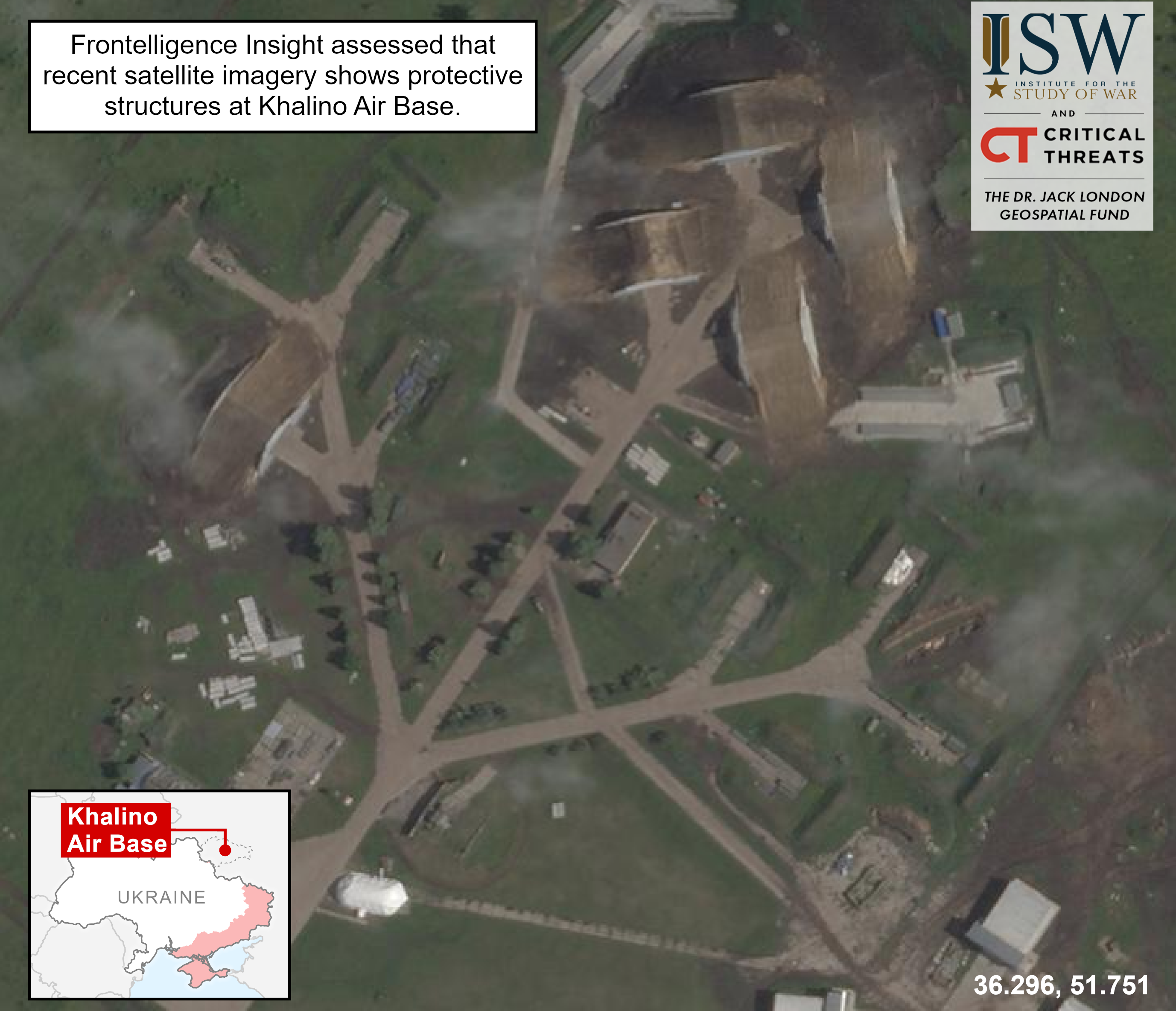Russia has begun constructing protective structures at select military airbases following Ukraine’s Operation Spider Web drone strikes that targeted four Russian airfields on 1 June, according to satellite imagery analysis by the Institute for the Study of War.
Ukraine-based open-source intelligence organization Frontelligence Insight reported that satellite imagery collected on 7 July shows Russian forces have constructed roughly 10 reinforced bunkers with soil coverings, 12 concrete bunker-type structures without soil coverings, and eight hangar-style buildings on the aprons at Khalino Air Base in Kursk Oblast. Planet Labs satellite imagery from 27 June of the same base shows reinforced hangars, supporting the assessment.
Additional construction activity was observed at Saky Air Base in occupied Crimea, where satellite imagery from 9 July shows two concrete bunker-style structures, with Planet Labs imagery from 7 July also revealing concrete aircraft shelters. However, no construction efforts were detected at Dzhankoi Air Base in occupied Crimea.
The fortification efforts come after Ukraine’s Security Service (SBU) launched Operation Spiderweb on 1 June, simultaneously targeting four Russian military airfields and destroying or damaging 41 strategic aircraft worth over $7 billion. The strikes hit Belaya, Dyagilevo, Olenya, and Ivanovo airfields, located between 2,000 and 4,000 kilometers from the frontline.
“The enemy bombed our state almost nightly with these aircraft, and today they truly felt that ‘retribution is inevitable […] We will respond to Russian terror and destroy the enemy everywhere – at sea, in the air, and on land. And if necessary – we’ll get them from underground too,” SBU Chief Vasyl Maliuk said.
The operation targeted A-50 early warning planes, Tu-95 and Tu-160 strategic bombers, and Tu-22 M3 medium-range bombers, destroying 34% of Russia’s strategic cruise missile carriers used for attacks on Ukraine. President Volodymyr Zelenskyy personally monitored the operation’s progress and had tasked the SBU with destroying Russian bombers, according to Maliuk.
The SBU operation required over 18 months of preparation and presented logistical challenges due to coordination across three time zones. The security service first transported FPV drones into Russian territory, followed by mobile wooden houses. The drones were concealed within these structures on cargo vehicles, with roofs designed to open remotely when activated.




